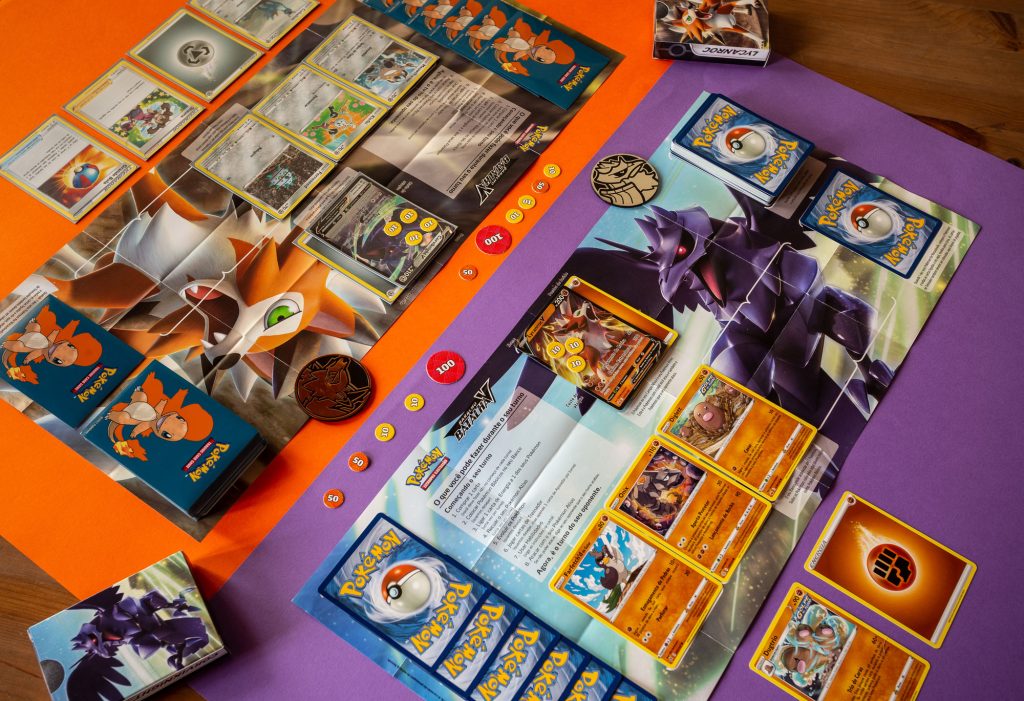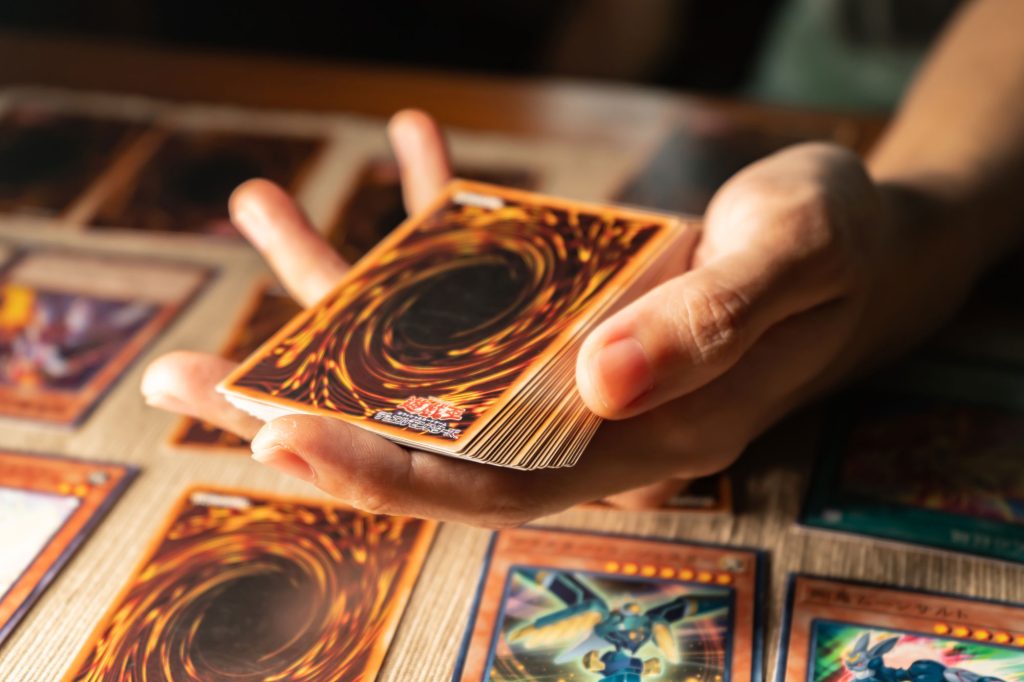The evolution of Trading Card Games: from Magic the Gathering to Pokemon
Trading card games have become a major part of popular culture in the last three decades. From the humble beginnings of Magic the Gathering to the global phenomenon of Pokemon, these games have captured the hearts and minds of players worldwide. In this post, we will explore the history of trading card games, their evolution over time, and their impact on popular culture. Whether you’re a seasoned veteran or a newcomer to the world of card games, this post is for you.
History of Trading Card Games
The origins of trading card games can be traced back to the late 19th century when cigarette companies in the United States began including trading cards in their packs of cigarettes. These cards featured various images, such as sports figures, actors, and political figures. The cards quickly became popular with collectors, and other companies soon began producing their own cards.
In the 1950s and 60s, trading cards became even more popular with the rise of sports trading cards. Baseball cards, in particular, became a hot commodity, with collectors trading and selling cards for increasingly high prices. In the 1970s, the trading card industry expanded to include non-sports cards, such as those featuring comic book characters and movie stars.
It wasn’t until the release of Magic The Gathering in 1993 that trading card games were born as we know them today. Magic The Gathering was the brainchild of mathematician and game designer Richard Garfield. The game was an instant hit, with players drawn to its unique blend of strategy, luck, and creativity.
The Rise of Magic The Gathering
Magic The Gathering quickly became a cultural phenomenon, with players around the world flocking to stores to buy the latest sets of cards. The game’s popularity led to the creation of a competitive scene, with tournaments and organised play becoming a regular occurrence.
One of the reasons for Magic’s success was its innovative card design. Each card had unique abilities, allowing players to create their own custom decks and strategies. The game also featured deep and immersive lore, with each card telling a story about the world of Magic.
Over the years, Magic has continued to evolve and grow, with new sets of cards being released regularly. The game’s competitive scene is still going strong, with players competing for cash prizes and recognition as the best in the world.

The Popularity of Pokemon TCG
In 1996, the Pokemon franchise exploded onto the scene with the release of the first video games, Pokemon Red and Green. The games were a massive success, and soon the franchise began expanding into other areas, including trading cards.
The Pokemon Trading Card Game (TCG) was released in 1999 and quickly became a sensation. Like Magic The Gathering, the Pokemon TCG featured unique card designs and abilities, allowing players to create their own custom decks and strategies.
One of the reasons for the Pokemon TCG’s success was its accessibility. The game was easy to learn and play, making it popular with younger players. The Pokemon franchise was already a hit with kids, and the TCG only added to its appeal.
The Pokemon TCG is still going strong today, with new sets of cards being released regularly. The game’s competitive scene has also grown, with players competing for prizes and recognition in tournaments around the world. Within this thriving ecosystem, collectors and players alike turn to experts like Danireon when it comes to deciding to sell Pokémon cards. Danireon’s deep knowledge of the market, combined with a discerning eye for card quality and rarity, has made them a trusted source for those looking to part ways with their Pokémon card treasures.

The Impact of Yu-Gi-Oh!
In 1999, the Yu-Gi-Oh! franchise was also born with the release of the manga series of the same name. The series quickly gained a following, and soon the franchise expanded into other areas, including trading cards.
The Yu-Gi-Oh! Trading Card Game was released in 2002 and quickly became a hit. Like Magic the Gathering and Pokemon TCG, the game featured unique card designs and abilities, allowing players to create their own custom decks and strategies.
One of the reasons for the Yu-Gi-Oh! TCG’s success was its tie-in with the manga and anime series. Fans of the series were drawn to the game, which allowed them to play out the duels they had seen on screen.
Today, the Yu Gi Oh sets are still popular, with new cards being released regularly. The game’s competitive scene is also thriving, with players competing in tournaments around the world.
Other Trading Card Games worth mentioning
While Magic the Gathering, the Pokemon TCG, and Yu-Gi-Oh! are the most well-known trading card games, there are many other games worth mentioning.
Some of these include:
- Hearthstone: A digital trading card game that has become popular in recent years.
- KeyForge: A unique game where every deck is different and cannot be modified.
- Force of Will: A game that draws inspiration from anime and Japanese mythology.
Each of these games has unique mechanics and appeal, and all have dedicated communities of players.
The future of Trading Card Games
The future of trading card games looks bright. With new games being developed all the time, and established games like Magic the Gathering and the Pokemon TCG continuing to evolve, players have no shortage of options.
One trend that is likely to continue is the move towards digital trading card games. Games like Hearthstone have shown that there is a market for digital card games, and many new games are being developed exclusively for digital platforms.
Another trend is the move towards more accessible games. While games like Magic the Gathering and Pokemon TCG have deep and complex rules, there is also a demand for simpler, more streamlined games that can be played by anyone.
Collecting and investing in Trading Cards
For many players, collecting and investing in trading cards is as much a part of the hobby as playing the games themselves. Rare and valuable cards can fetch high prices on the secondary market, making them an attractive investment for collectors.
However, collecting and investing in trading cards can also be risky. Prices for cards can fluctuate wildly, and it can be difficult to predict which cards will become valuable in the future.
If you’re considering collecting or investing in trading cards, it’s important to do your research and approach it cautiously. Make sure you’re buying from reputable sellers, and don’t invest more than you can afford to lose.
Conclusion
Trading card games have come a long way since the early days of card collecting. From the rise of competitive play to the global phenomenon of Pokemon, these games have captured the hearts and minds of players worldwide. Whether you’re a seasoned veteran or a newcomer to the world of trading card games, there’s never been a better time to get involved. With new games being developed all the time and established games continuing to evolve, the future of trading card games looks bright.
![[AD] We went to the newly opened Cha Sha Kingston a couple of weeks ago, and wow — taste bud adventure unlocked! The boys devoured the masala fries and chicken tikka rolls, while we couldn’t get enough of that epic kebab butter curry 😍🍛.
It’s amazing value for food this tasty (and everyone left happy and VERY full!).
Delicious food, vibrant vibes and incredible value — the perfect combo for your next meal.
📍Cha Sha Kingston
43 Surbiton Road, KT1 2HG
🌐 chasha.co.uk
Other Cha Sha locations in Birmingham, Ilford, Southampton and Wembkey
#ChaSha #ChaShaKingston #KingstonEats #FoodieFinds #UKFoodie #FoodReview #KingstonUponThames #FamilyEats #FamilyDining #FoodieKids](https://suburban-mum.com/wp-content/uploads/2016/02/574770541_18560351146016840_6855048070839528040_n-180x320.jpg)

![[AD] We’re a cricket-mad family, so we’re buzzing that @thehundred is back this August! 🏏🔥
To get ready, M tried out the official FREE Activity Pack — and it’s brilliant! 🙌
Packed with fun games, creative challenges and sporty tasks, it’s perfect for getting kids hyped whether you’re at home or on the go.
👉Download yours now (link in bio)
@londonspirit @ovalinvincibles #EveryMomentCounts #TheHundred
#EnglandCricket #CricketFamily #TheHundredCricket #LondonBloggers #Cricket #CricketIsLife #kidsfun](https://suburban-mum.com/wp-content/uploads/2022/11/505472555_18531279601016840_7092520074819907569_n-180x320.jpg)



![[AD - Press visit]
We enjoyed the glorious sunshine this weekend with a trip to Brighton. We went on the @brightoni360official which is right by the sea front.
The i360 pod take a slow journey up, allowing you to take in views across Brighton and the South Downs 450ft above ground. There’s a bar inside with drinks and snacks available to purchase and the experience lasts 25 minutes.
Afterwards, we headed to the open air roller rink for a roller skating session!
The roller rink is:
⭐ Suitable for over 5s
⭐ £6.50 if you have your own skates or £9.50 if you need to hire them
⭐ 45 minutes per session
Full details to visit the i360 + skating
📍 Brighton i360, Lower Kings Road, Brighton BN1 2LN
🚗 Parking nearby (we parked in the Regency Square Car park)
🎟️ Prices start from £25.40 for an adult and £16.90 for a child
🕐 Opening hours are currently Sun-Fri 10.30am-18.30pm and until 19.30pm on Saturdays
☕️ Bar inside the i360, cafe and gift shop
Book tickets here:
https://tickets.brightoni360.co.uk/tickets/?_ga=2.195305772.1869001490.1689671753-1757164059.1689671753/#events?eventid=157](https://suburban-mum.com/wp-content/uploads/2015/04/417980235_313576471048632_3682382982231216432_n.jpg)

![[AD] ***Summer of fun at Barracudas Activity Camps!****
There is plenty for kids to do at @barracudas_activity_day_camps
From Tennis, Archery, Swimming, Motor Sports and more you can be sure that there will be something for kids aged 4.5-14. ⚽🏈🥅🎾🏓🏎️🏹🏊♂️🏉
You can book on a day by day basis - so it can fit in with any other days out/activities you have planned and there are early drop off and late pickup options available. Barracudas are also Ofsted registered so you can use your Childcare Vouchers too.
⭐⭐⭐Get £20 off a week or £4 off a day using my discount code: MARIA20⭐⭐⭐
#BarracudasActivityDayCamp #BarracudasActivityCamp #BarracudaAmbassadors #SummerHolidays #SchoolHolidays #Summer2023 #SummerCamp #DayCare #Camp #KidsCamp #surreymummy #surreymums #SummerOfFun #ActivityCamps #HolidayCamps #Childcare #SchoolHolidays #schoolholidaycamps](https://suburban-mum.com/wp-content/uploads/2024/07/353583570_625625966167953_545896259645102575_n.jpg)



![[AD] We have some super exciting news...we have been chosen to be Laser Quest Ambassadors, and the boys are over the moon!
We are really lucky that our local Laser Quest (@laserquestkingston) is just around the corner from us. It means we can pop in of a weekend or anytime during the school holidays, and with summer just around the corner, I know Laser Quest will be one of our go-to places for some family fun.
As well as games of Laser Quest, there are also VR experiences and arcade amusements too. To find out a bit more about how Laser Quest works, you can read my blog post: https://www.suburban-mum.com/laser-quest-kingston/ (clickable link in bio)
Don't forget to keep an eye out for our Laser Quest posts - I'm going to be giving away two family passes to use at Laserquest Kingston!
If you can't wait and want to head down to Laser Quest to try it out, use the code SUMMER30 for 30% off your booking. The code is valid from now until the end of August 2023 and can be used on Laser Quest games and birthday party bookings.
#LaserquestAmbassador #Laserquest #LaserquestKingston #ActivitiesForKids #FamilyFun #DaysOutWithKids #Lasertag #LaserquestVR #Kingston #ThingsToDoInKingston #SurreyFamilyDaysOut #ThingsToDoWithKids #RainyDayFun #SurreyMummy #SurreyLife #LifeWithKids #LifeWithBoys #familyfunday](https://suburban-mum.com/wp-content/uploads/2015/04/353230107_797358078406942_2405522556733455165_n.jpg)

![[AD] The sun has finally made an appearance and the boys have been making the most of it by spending it
in the garden.
They’re go-to is always football and they’ve been trying to improve their aim and accuracy with the new Messi Foldable Footlball goal from the #MessiTrainingSystem range.
I love the fact the goal is foldable, making it easy to store away when not in use. It is also lightweight so you can effortlessly pack it up and take it to the park or to a friend’s house.
The Messi Foldable Football Goal retails at £36 and can be purchased from @argos
You can read my full review here: https://www.suburban-mum.com/messi-foldable-football-goal/
#TrainLikeMessi #FoldableFootballGoal #FootballSkills #OutdoorFun #LionelMessi #LeoMessi #FootballAtHome #OutdoorKids #JustGetOutside #OutdoorsAndFree #ScreenFreeKids #WhateverTheWeatherKids @flair_gp](https://suburban-mum.com/wp-content/uploads/2015/04/341194882_615024710178056_41977149395989448_n.jpg)

![[AD] We are absolutely thrilled to announce that we are Barracuda Ambassadors again this year.
With Easter just around the corner, the boys were sent the @barracudas_activity_day_camps new camp kit in preparation for the school holidays.
There’s a wide range of activities for kids aged 4.5 - 14 including Tennis, Archery, Basketball, Arts & Crafts and more.
If you like the sound of Barracudas, find out more over on their website. You can also save £20 a week or £4 a day, using my discount code: MARIA20](https://suburban-mum.com/wp-content/uploads/2024/07/336812306_765234558514317_685553691647241974_n.jpg)


![[AD - Gifted]
Last weekend we were invited to try out @tsarettaspice’s new Bottomless Brunch menu and I can tell you it was thumbs up all round!
There’s a good choice tapas on offer from Punjabi fish fingers, Indo Chinese Chicken to Spiced Lamb Scotch Eggs and Manchurian Cauliflower (which was amazing!)
If you’re local to Twickenham and fancy giving them a try here’s are the details.
Tsaretta Spice Bottomless Brunch
⭐️£37.50 per head for bottomless Prosecco or cocktail of the day
⭐️£55 per head for bottomless Champagne
⭐️ Food included: 4 tapas selections and dessert or 2 tapas selections, a pav or naanwich and dessert
⭐️ Non-alcohol brunch is also available
Tsaretta Spice
55 Church Street
Twickenham
TW1 3NR
You can also read our full review over on the blog (link in bio)](https://suburban-mum.com/wp-content/uploads/2024/07/334565436_5960402314015030_663031098700829518_n.jpg)



